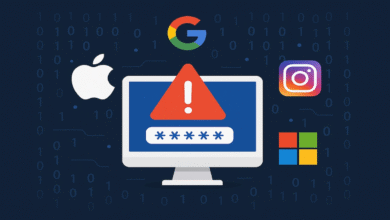Google Quantum Computing Bitcoin Threat: What You Need to Know

The emergence of Google’s quantum computing technology raises significant concerns about its potential as a threat to Bitcoin security. Recent advancements have enabled a remarkable 20-fold reduction in the computing resources required to compromise traditional cryptographic protocols like RSA encryption. While Bitcoin itself does not utilize RSA, the underlying principles of its cryptographic defenses, such as the Elliptic Curve Digital Signature Algorithm (ECDSA), may be at risk from future quantum attacks. Experts at New York Digital Investment Group (NYDIG) caution that the rapid development of quantum computing poses a serious cryptography threat, prompting the urgent need for post-quantum cryptography solutions. As the race for quantum supremacy accelerates, the Bitcoin community must grapple with the implications of potential vulnerabilities that could undermine the very foundations of this digital currency.
As we delve into the implications of advanced quantum computing on cryptocurrency, it’s essential to recognize the intersection of emerging technology and financial security. The concern over Google’s recent breakthroughs highlights the vulnerability of Bitcoin against possible quantum decryption methods, particularly regarding the efficiency of its digital signatures. With the significant progress made in quantum bit (qubit) technology—reducing the necessary qubits to breach established cryptographic algorithms—many experts urge a proactive approach in revisiting Bitcoin’s foundational protections. This rise of quantum threats has sparked discussions regarding the future of cryptography and the potential transition to post-quantum frameworks that can sustain the integrity of blockchain technology. As we explore these developments, the dialogue surrounding the longevity and resilience of digital currencies like Bitcoin becomes increasingly critical.
Google’s Quantum Computing Breakthrough and Bitcoin’s Security
Google’s recent advancements in quantum computing signal a concerning potential for the future of Bitcoin security. With a staggering reduction in the required qubits to break RSA encryption from 20 million to just one million, even though Bitcoin itself does not use RSA, the implications for cryptographic security are noteworthy. As stated by NYDIG, while Bitcoin might not be at immediate risk, it is essential to understand that every breakthrough in quantum computing brings us closer to a point where Bitcoin’s defenses could be compromised. The underlying technology could enable quantum computers to break various cryptographic systems, including those used by Bitcoin.
The development of quantum computers capable of breaking ECDSA or Schnorr signatures—algorithms critical to Bitcoin’s operation—remains a significant concern. As advancements continue, the ability for quantum computers to compromise these signature schemes could emerge sooner than anticipated. This possibility necessitates proactive measures within the cryptocurrency community to ensure that enhanced security protocols are implemented before vulnerabilities become a reality.
The Threat of Quantum Computing to Modern Cryptography
As quantum computing technology evolves, the traditional methods of securing data through cryptography face increasing threats. RSA encryption, which serves as the backbone for many secure communications today, could see its effectiveness dramatically diminished due to quantum attacks. Shor’s algorithm demonstrates how a sufficiently powerful quantum computer could efficiently factor the large numbers that underpin RSA security, making it obsolete. Hence, cybersecurity experts are urgently analyzing the implications of quantum breakthroughs on existing encryption methods.
The looming quantum threat also extends to Bitcoin security, though its direct usage of RSA is not applicable. The elliptic curve cryptography employed by Bitcoin relies on its inherent complexity for security, but advocates, including those at NYDIG, emphasize the urgency to transition to post-quantum cryptography (PQC). The development and adoption of PQC alternatives will ensure that Bitcoin can withstand future quantum threats, safeguarding investments and retaining trust in this digital currency.
Impacts of Quantum Computing on Bitcoin Performance
Transitioning to post-quantum cryptography is not without its challenges, especially concerning Bitcoin’s performance and efficiency. The nature of PQC algorithms typically produces larger cryptographic keys and signatures, alongside longer processing times for signing and validating transactions. This adjustment could lead to significant delays and higher resource consumption on the network, ultimately impacting user experience and Bitcoin’s transaction throughput. Users and developers must thoroughly understand these trade-offs to prepare adequately for the potential shifts in Bitcoin’s operational dynamics due to quantum threats.
Additionally, as we approach a future where quantum computing becomes a mainstream reality, the community must embrace the necessity for regular upgrades and technological evolution. Educating users about the implications of quantum technology on transaction efficiency and security is paramount. As Bitcoin continues to grow and integrate into various financial systems, ensuring that both performance and security are not compromised by new cryptographic standards is essential for the currency’s longevity.
The Future of Bitcoin amidst Quantum Advancements
Looking forward, it’s crucial for Bitcoin stakeholders to remain vigilant about the rapidly advancing field of quantum computing. Companies like NYDIG emphasize that while Bitcoin’s current cryptographic framework is robust for now, the trajectory of quantum computing hints at inevitable challenges in the future. By fostering a proactive approach to potential vulnerabilities, stakeholders can help create pathways for transitioning towards quantum-resistant alternatives smoothly.
The Bitcoin ecosystem must also prioritize collaboration among cryptographers, developers, and miners to ensure a cohesive strategy against quantum threats. The use of post-quantum cryptography is paramount, not just for immediate security but also for fostering confidence among users. As more entities begin to acknowledge the relevance of quantum computing in the crypto space, this collective effort can work towards preparing Bitcoin adequately for the quantum age.
Understanding Quantum Threats to Cryptocurrency
In today’s digital landscape, understanding the threats posed by quantum computing to cryptocurrencies, particularly Bitcoin, has become a pressing issue. As Google continues to push the boundaries in quantum research, the encryption practices that provide security to transactions and data are increasingly under scrutiny. Current encryption methods may soon face challenges to their effectiveness, particularly from quantum computers capable of executing operations at unimaginable speeds.
This increased awareness among cryptocurrency users highlights the importance of monitoring developments in quantum technology and its potential applications to security breaches. Individuals and organizations involved in cryptocurrency must take a proactive stance, educating themselves on how advancements in quantum computing might impact their operations, and how they can implement changes to notice evolving threats.
Post-Quantum Cryptography: The Key to Bitcoin’s Safety
The rise of post-quantum cryptography (PQC) presents a solution to the impending threats posed by quantum computing on Bitcoin security. By developing new cryptographic algorithms designed to be secure against quantum attacks, researchers aim to build a framework capable of safeguarding digital currencies in the face of evolving technology. Ensuring that these new cryptographic measures are integrated into the ecosystem is critical for the sustainability of Bitcoin as it adapts to emerging threats.
Investments in research and development for post-quantum cryptography will play a vital role in determining the future security posture of Bitcoin and other cryptocurrencies. Engaging in collaborative efforts with technologists and cryptographers to test and validate these new algorithms helps further secure the future of digital assets, enabling them to withstand the formidable power of quantum computing.
Educating Stakeholders on Quantum Impacts
With growing concerns around quantum computing and its potential effects on cryptocurrencies, educating stakeholders has become essential. Informing miners, investors, and developers about quantum threats and what new cryptographic measures could mean for the future of Bitcoin can empower the community. Regular updates on advancements in quantum technology and their related challenges can help maintain the integrity of transactions and foster informed discussions.
Furthermore, platforms offering resources regarding quantum computing’s impact can cultivate a more prepared community. This effort ensures that all stakeholders are aware of potential vulnerabilities and the importance of transitioning to post-quantum solutions. Comprehensive education initiatives can also promote a unified response to maintain Bitcoin’s security in an evolving technological landscape.
Collaboration in the Face of Quantum Computing Threats
As quantum computing poses increasing risks, collaborative efforts among cryptocurrency experts, developers, and security professionals will be essential. Joint initiatives can facilitate sharing knowledge and resources to bolster defenses against quantum attacks. Such partnerships can yield innovative strategies and frameworks to incorporate post-quantum cryptography into Bitcoin’s architecture, thus enhancing security without sacrificing performance.
This type of collaboration not only promotes technological advancements but also fosters a united front against potential threats. In the face of external pressures from advances in quantum computing, the cryptocurrency community can amplify its resilience by working together to implement robust security solutions that protect users and transactions alike.
Regulatory Considerations for Quantum-Enhanced Cryptography
As quantum computing technology threatens the foundations of modern cryptography, regulatory bodies might need to assess and adapt existing frameworks to encompass quantum-resistant standards. This adaptation is crucial to ensure that financial and digital asset regulations remain relevant and effective in the face of rapidly evolving technologies. Regulators need to work alongside cryptographers and industry stakeholders to understand the nuances of post-quantum cryptography and its implications for broader financial stability.
Moreover, as quantum-enhanced solutions are developed, regulations must evolve simultaneously to ensure that emerging technologies are not only effective but also secure against potential exploitation. This cooperative approach can strengthen the overall infrastructure that supports cryptocurrencies, creating a regulatory framework that safeguards users while encouraging innovation.
Frequently Asked Questions
How could Google’s quantum computing breakthroughs threaten Bitcoin security?
Google’s advancements in quantum computing have significantly reduced the resources needed to break cryptographic algorithms like RSA encryption. While Bitcoin itself doesn’t use RSA, it relies on the Elliptic Curve Digital Signature Algorithm (ECDSA) and Schnorr signatures, which could become vulnerable to quantum attacks in the future. This raises concerns about the long-term security of Bitcoin as quantum technology progresses.
What is the significance of the 20-fold reduction in qubits for RSA encryption and Bitcoin?
The 20-fold reduction in qubits required to potentially break RSA encryption is alarming as it shows rapid progress in quantum computing. Initially needing 20 million qubits, Google now suggests that only one million qubits might suffice. This indicates that quantum computers could pose a cryptographic threat not just to RSA but potentially to Bitcoin’s digital signature schemes if adequate post-quantum cryptography solutions aren’t implemented.
What role does post-quantum cryptography play in securing Bitcoin against quantum threats?
Post-quantum cryptography (PQC) is crucial in mitigating the potential risks posed by quantum computing to Bitcoin. As current signature algorithms like ECDSA and Schnorr could be vulnerable to quantum attacks, ongoing research and development of PQC techniques aim to create secure digital signatures that can withstand such threats, ensuring Bitcoin security in the quantum era.
Is Bitcoin currently at risk from quantum computing according to experts?
While experts from NYDIG have indicated that Bitcoin is not currently at immediate risk from quantum computing threats, they emphasize that it is only a matter of time before vulnerabilities arise. As quantum technology continues to develop, the Bitcoin community is urged to prepare for necessary upgrades to cryptographic systems to safeguard against future quantum threats.
What are the potential impacts of implementing post-quantum cryptography on Bitcoin’s performance?
Implementing post-quantum cryptography on Bitcoin may lead to larger keys and signatures, which can impact performance by increasing the time required for signing and verification processes. This could also affect block space efficiency and change how users interact with the Bitcoin network, highlighting the importance of balancing security with operational efficiency.
What cryptographic algorithms does Bitcoin use that may be affected by quantum computing?
Bitcoin utilizes Elliptic Curve Digital Signature Algorithm (ECDSA) and Schnorr signatures for its digital signatures. Both of these algorithms, due to their mathematical structure, could be vulnerable to quantum computing attacks in the future, necessitating discussions about evolving Bitcoin’s cryptographic security as quantum technology advances.
How does quantum computing threaten existing cryptographic systems like RSA and ECDSA?
Quantum computing threatens existing cryptographic systems because it can solve certain mathematical problems significantly faster than classical computers. For instance, algorithms like Shor’s algorithm allow quantum machines to factor large numbers efficiently, directly jeopardizing RSA encryption and potentially breaking ECDSA signatures used in Bitcoin, thereby posing a risk to digital security.
| Key Point | Details |
|---|---|
| Google’s Quantum Breakthrough | Achieved a 20-fold reduction in resources needed to break RSA encryption using only 1 million qubits. |
| NYDIG’s Warning | Google’s quantum research threatens Bitcoin’s future, stating that while Bitcoin is not currently at risk, vulnerabilities could emerge as quantum technology advances. |
| Impact on Bitcoin | Bitcoin utilizes ECDSA and Schnorr signatures which could become vulnerable to quantum attacks, necessitating future upgrades. |
| Post-Quantum Cryptography (PQC) | Development of PQC is underway, but may require larger keys and signatures, affecting performance and user interaction. |
Summary
Google’s quantum computing breakthrough poses a significant threat to Bitcoin’s security in the future. As the tech giant nears the capability to break cryptographic algorithms like RSA with drastically reduced qubit requirements, the potential for quantum attacks on Bitcoin’s ECDSA signatures can’t be overlooked. While current measures are underway to develop post-quantum cryptography solutions, it is clear that Bitcoin will need to adapt to maintain its integrity and security against emerging quantum threats.




